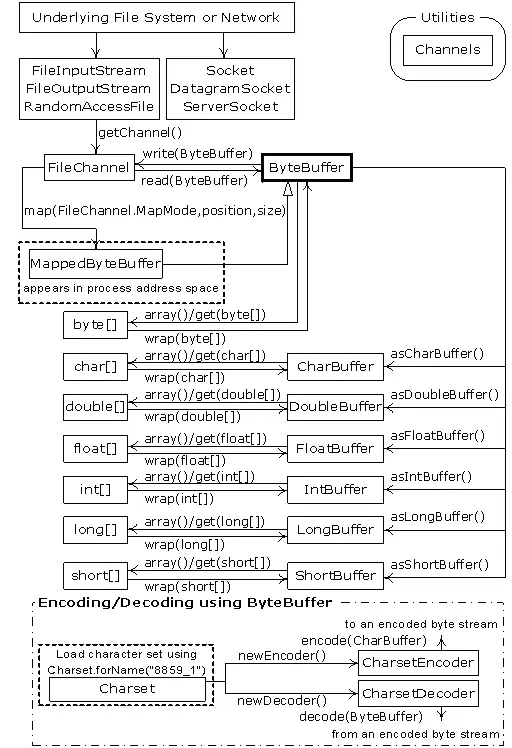Data manipulation with buffers
The diagram here illustrates the relationships between the nio classes, so that you can see how to move and convert data. For example, if you wish to write a byte array to a file, then you wrap the byte array using the ByteBuffer.wrap( ) method, open a channel on the FileOutputStream using the getChannel( ) method, and then write data into FileChannel from this ByteBuffer.

Note that ByteBuffer is the only way to move data in and out of channels, and that you can only create a standalone primitive-typed buffer, or get one from a ByteBuffer using an “as” method. That is, you cannot convert a primitive-typed buffer to a ByteBuffer. However, since you are able to move primitive data into and out of a ByteBuffer via a view buffer, this is not really a restriction.
